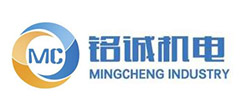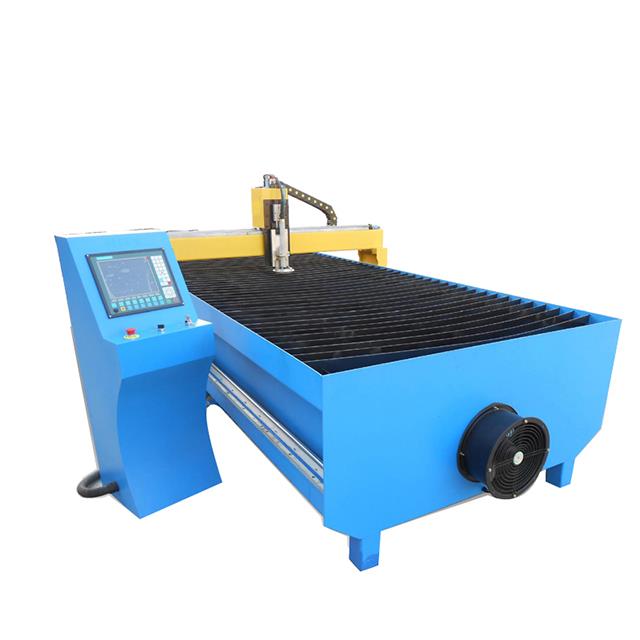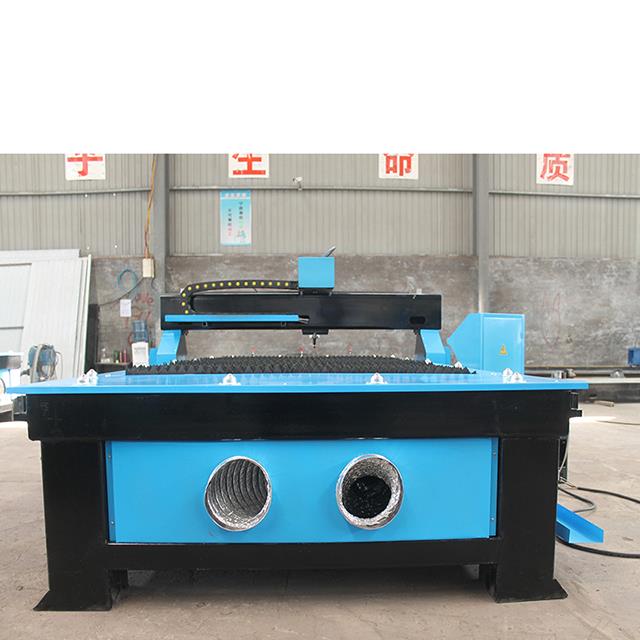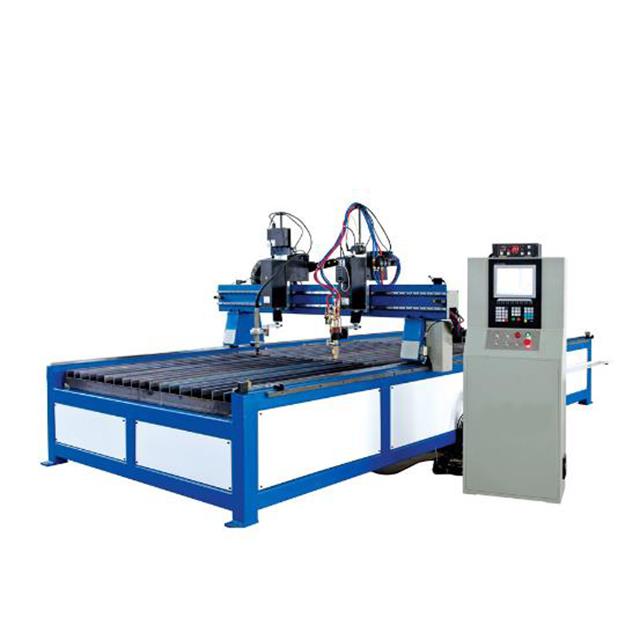What is the difference between laser cutting equipment in cutting metal and non-metal
Release Time : 2020-09-24 View Count : 次Laser technology has always been a kind of high-end manufacturing industry. Now it has penetrated into all aspects of our lives. Many people know about laser beauty, laser cutting, and laser welding. Next, Dalian Mingcheng Electromechanical will give you an explanation on the metal laser cutting technology, hoping to help you.
The laser beam is focused into a small spot whose minimum diameter can be less than 0.1mm), so that a high power density at the focal point can exceed 106W/cm2). At this time, the heat input by the light beam (converted by light energy) far exceeds the part reflected, conducted or diffused by the material, and the material is quickly heated to vaporization humidity and evaporates to form holes. With the relative linear movement of the light beam and the material, the hole continuously forms a slit with a very narrow width (such as about 0.1mm). The thermal effect of trimming is small, and there is basically no deformation of the workpiece.
During the cutting process, an auxiliary gas suitable for the material to be cut is added. When steel is cut, oxygen must be used as an auxiliary gas to produce an exothermic chemical reaction with the molten metal to oxidize the material, and at the same time help blow away the slag in the slit. Compressed air is used to cut polypropylene and other plastics, and inert gas is used to cut flammable materials such as cotton and paper. The auxiliary gas entering the nozzle can also cool the focusing lens, preventing smoke and dust from entering the lens holder to contaminate the lens and cause the lens to overheat.
Most organic and inorganic can be cut with laser. In the metal processing industry, which has a heavy share in industrial manufacturing, many metal materials, regardless of their hardness, can be cut without deformation (the most advanced laser cutting system is currently used to cut industrial steel to a thickness close to 20mm). Of course, for high-reflectivity materials, such as gold, silver, copper, and aluminum alloys, they are also good heat transfer conductors, so laser cutting is difficult or even impossible (some difficult-to-cut materials can be cut with pulsed laser beams. Due to the extremely high peak power of the pulse wave, the absorption coefficient of the material to the beam will instantly increase rapidly).
Laser cutting has no burrs, wrinkles and high precision, which is better than plasma cutting. For many electromechanical manufacturing industries, because the modern laser cutting system of the microcomputer program can easily cut workpieces of different shapes and sizes (the drawing of the workpiece can also be modified), it is often preferred to the punching and molding process; despite its processing speed It is slower than die punching, but it has no mold consumption, no need to repair molds, and saves time for mold replacement, thereby saving processing costs and reducing product costs, so it is more economical in general.
On the other hand, from the perspective of how to adapt the mold to the design size and shape of the workpiece, laser cutting can also play its advantages in accuracy and good reproducibility. As a preferred manufacturing method for laminated molds, since it does not require advanced mold making workers, laser cutting operation costs are not expensive, so mold manufacturing costs can be significantly reduced. The additional benefit of laser cutting molds is that the cutting edge of the mold will produce a shallow hardened layer (heat-affected zone), which improves the wear resistance of the mold during operation. The non-contact characteristic of laser cutting brings stress-free advantages to circular saw blade cutting and forming, thereby increasing the service life.
Laser cutting of common engineering materials
1. Laser cutting of metal materials
Although almost all metal materials have high reflectivity to infrared wave energy at room temperature, the emission is in the far infrared band
The lamp-pumped ND:YAG laser with 1.064um beam and the 10.6μm CO2 laser are still successfully applied to many metal laser cutting practices
2. Laser cutting of non-metallic materials
The 10.6μm CO2 laser beam is easily absorbed by non-metallic materials. The poor thermal conductivity and low evaporation temperature make the absorbed beam almost the entire interior of the input material, and instantly vaporizes at the spot where it is irradiated, forming a starting hole and entering the cutting The virtuous circle of the process.










